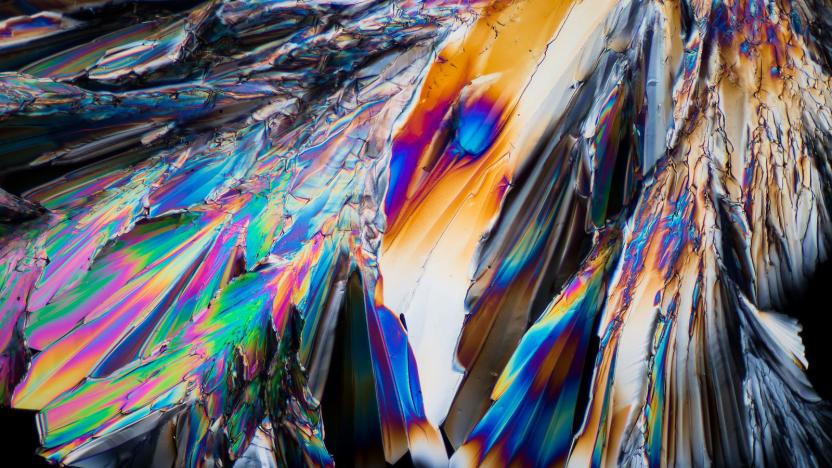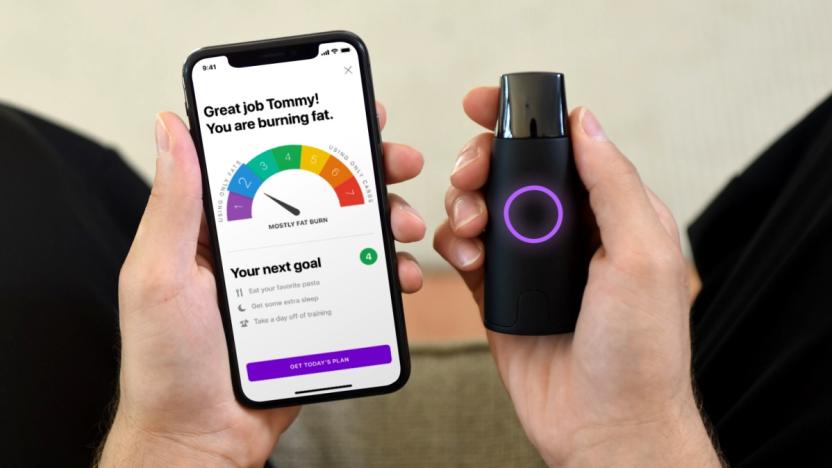metabolism
Latest

Scientists store data inside molecules that drive your metabolism
Never mind using DNA to store data -- there may be a simpler way to store info. Brown University scientists have shown that it's possible to store data in solutions of artificial metabolic molecules, such as amino acids and sugars. The presence or absence of a given molecule creates one bit of data, and the complexity of the mixture decides how many bits that mixture can hold. After that, it's a matter of placing thousands of mixtures on tiny metal plates as nanoscale droplets -- you use a mass spectrometer to decode the data once the droplets have dried.

Lumen claims a 'single breath' can help you lose weight
Last August Lumen raised nearly two million dollars on Indiegogo for its metabolism tracking device, and now at CES it's ready to show the final consumer product. The plan behind Lumen is that owners will breath einto it multiple times a day, let it measure their changing metabolism -- via carbon dioxide readings -- and (in theory) have a better handle on what workouts or meals work best for them to burn fat. We didn't go mouth-on with the $300 vape-like device, but it's small and pocketable enough to be carried so someone can use it as intended.

NYU synthesizes crystals with lifelike behavior under light
Scientists have long surmised that inorganic life is possible. New York University hasn't created any at this stage, but it just produced an uncannily close imitation through a recent experiment. When exposing hematite particles (iron and oxygen in a polymer) to specific wavelengths of blue light, researchers got the particles to form crystals that metabolize and move together like a flock. If it weren't for the lack of reproduction, the crystals would technically qualify as life -- and one upcoming test will trade mobility for that self-replication. Accordingly, NYU sees the crystals not just as having possible uses for electronics, but also as illustrating that a finer line might exist between living creatures and synthetic objects. Whether or not the university ever meets all three conditions for life at once, we may have to reset our expectations for what chemicals can do when they get together.

